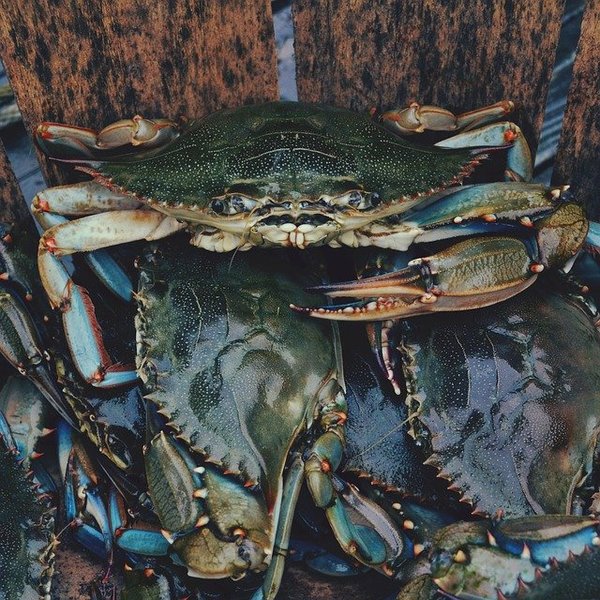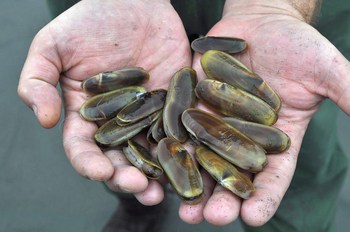How to Hold A Crab – Never Get Pinched Again!
Every first-time recreational crabber’s worst fear is getting pinched. I’ve always used tongs for safe measure, but as a crabber, you inevitably need to know how to hold a crab. So, I did some research and found 3 foolproof ways anyone can hold a crab.
First, Secure the Crab
For the crab and everyone else’s Safety, you need to gently secure the crab so you can safely hold it.
Let’s say the crab is scurrying around on the ground. First, clear the area so that the crab cannot hide under anything, and to avoid bumping into someone or something.
Gently rest your shoe on the crab’s shell to keep it in place. This will make it much easier to pick up the crab.
Wearing flip flops? Or no shoes at all? No problem, rest a relatively light object on the top of the crab’s shell from behind. This could be a stick, a rolled up newspaper, or even your finger. Just make sure to keep it on the center of crabs shell where its claws cannot reach. I would recommend bringing a good pair of tongs crabbing, which will work also.
This will avoid the crab from pinching you or running away. Now, you’re free to pick up the crab. Let’s go over several ways to safely do this.
Pinch from the back (Safest Method)
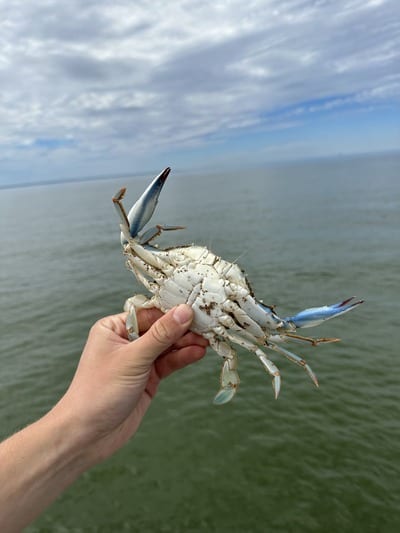
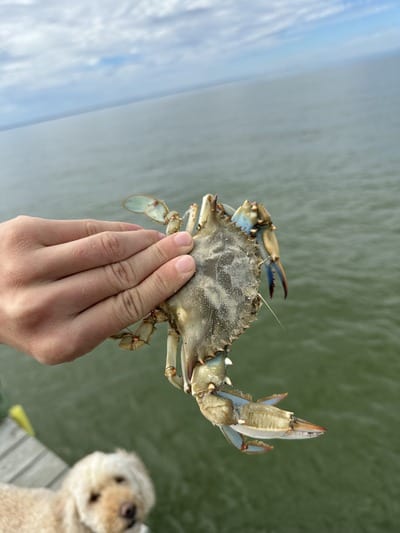
Slip your thumb underneath the back end of the crab and rest it on the base its belly. Next, place your fingers on top of the crab’s back end of its shell. Have a firm grip and hold it with its claws facing away from you. The claws cannot reach the back of the crab, so you won’t get pinched.
That, in my opinion, is the safest way to hold a crab for beginners.
Lift From The Armpits
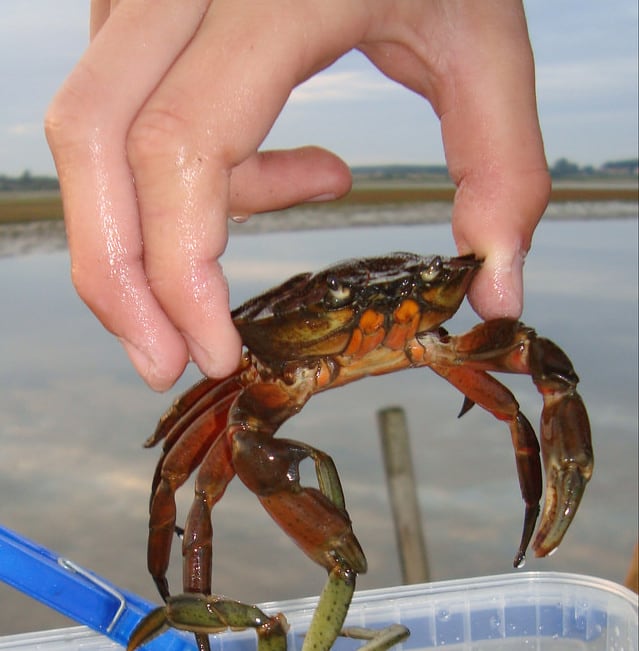
A popular way to hold a crab is by their ‘armpits’. It’s a great way to hold a crab because crabs cannot reach there. Poor little guys… Imagine if they had an itch!
It’s a simple task any beginner crabber can do. Secure your crab like I explained aabove. Next, where the crab’s two longest points stick away from its body, place your thumb and pointer finger underneath said points in ‘C’ shape.
Imagine your fingers as a large claw (pun intended) and pick up the crab.
I should mention that this is for smaller crabs. Depending on the size of your hands this may or may not work for you.
Personally my hands a bit small, which doesn’t make this my go-to choice for picking up crabs.
The Crab Purse Method
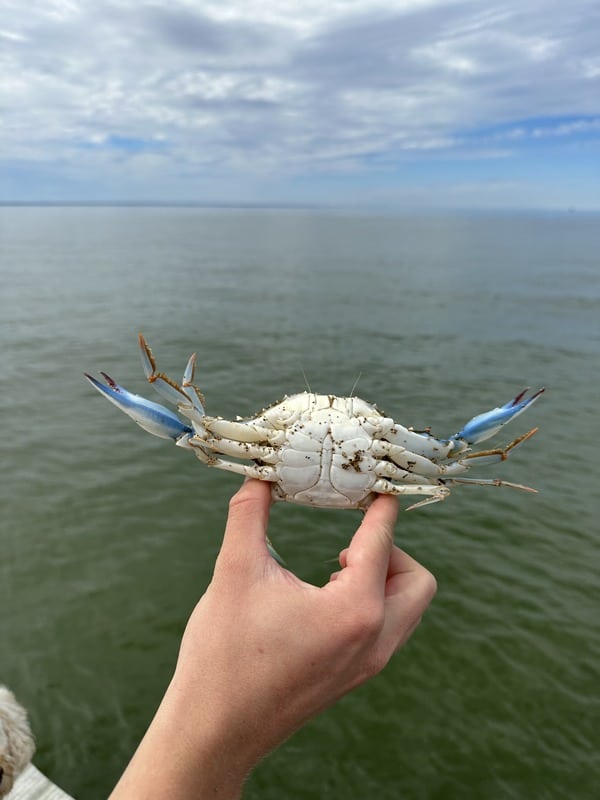
The crab purse is a funny way to look at holding a crab, but very effective! It involves holding the two back fins of a crab as a ‘handle’ and the body of the crab acting as the purse.
First, you need to secure the crab, as I mentioned above. Next, make a ‘C’ shape with your thumb and pointer finger to secure the two fings on the back end of the crab. Run your fingers towards the end of the fins and connect them to make a ‘handle’ for your purse.
Sounds ridiculous, right? Well, it works, but there’s a better chance the crabs can pinch you. You obviously shouldn’t hold it like an actual purse on your side, but rather out in front of you so the claws cannot reach you.
Two-Claw Restraint Method


The best, and riskiest, way to hold a crab, in my opinion, is the two claws method. You’re more likely to get pinched unless you do it right.
It involves holding the crab by its cheliped (the thick part of its leg under the claw) in one hand. Once you have the crab secure, it’s a breeze with a bit of practice and confidence.
Start by securing the crab as I mentioned above. Make sure the crab is facing away from you. Next, you want to grab the left cheliped from behind where the right claw may have trouble reaching. Then grab the right cheliped, which should be much easier with the other claw secure.
Next, unless you want to hold the crab with both hands, you need to transfer the two claws into one hand. Bring both claws to close together then place a firm grip around the two with your dominant hand. It’s easier than it sounds and makes the crab’s pinchers useless.
If this sounds a bit too advanced for you, that’s no problem. I usually resort to using tongs. It’s safer and doesn’t take much practice. I recommend using tongs with rubber tips to firmly grasp the slippery crab.
Prevent Getting Pinched
A simple way to prevent getting pinched it to come prepared. Using tongs, wearing gloves, and closed-toed shoes can do wonders when dealing with crabs.
Gloves are great at negating a crab pinch, but there’s still a bit of pain involved. From past experiences of me and fellow crabbers, welders gloves seem to be most effective. Gardening gloves and other thinner types of gloves will prevent some pain, but still feel uncomfortable.
They are mostly to prevent the crab’s claw from piercing your skin, not the extreme pressure exerted from the claw.
I can’t imagine anyone would want to get pinched in the toe. A simple way to avoid an embarrassing and painful day on the water is to wear closed toed shoes when dealing with crabs.
Crocs, water shoes, even normal shoes can save your feet from a crab pinch. A wet, smelly pair of shoes is better than a broken toe.
First Aid
Let’s say you get pinched. The crab will clamp down until it wants to release. If you ever find yourself in that difficult situation, splash or fully submerge the crab in water.
It’s important to have a first aid kit on hand to deal with the crab. If the claw pierces the skin you must treat it immediately with peroxide to prevent any bacteria growth. Be sure to keep a bottle on hand when dealing with crabs. After treatment, wrap with a band-aid to keep the wound sanitary.
If the crab doesn’t penetrate the skin, you’re in luck! (In a way) Disinfect the pinch with warm water and soap right away. An antibiotic ointment should help. Be sure to consistently ice the pinch to prevent any swelling. Any pain should subside within a day or two.
Related Questions
Why do Crabs Pinch?
Crabs pinch primarily for defense, food gathering, digging, and sexual displays. Pinching is critical for their survival as a crab.
Can Crabs Cut off a Finger or Toe?
Crabs are not strong enough to cut off a finger, toe, or bone. While they are strong enough to draw blood, these are usually shallow cuts. Disinfect any pinched area that draws blood as soon as possible.

